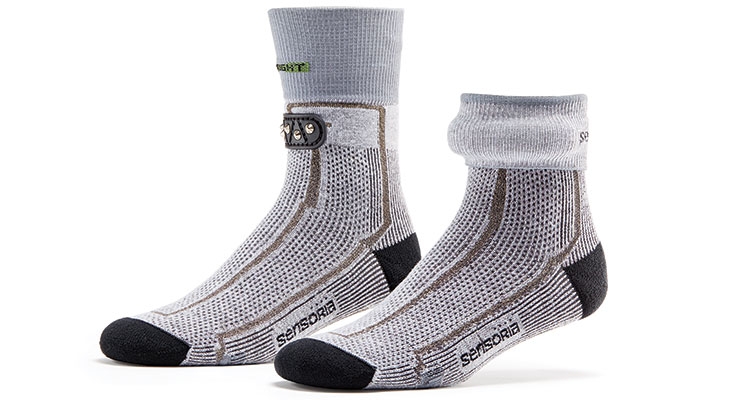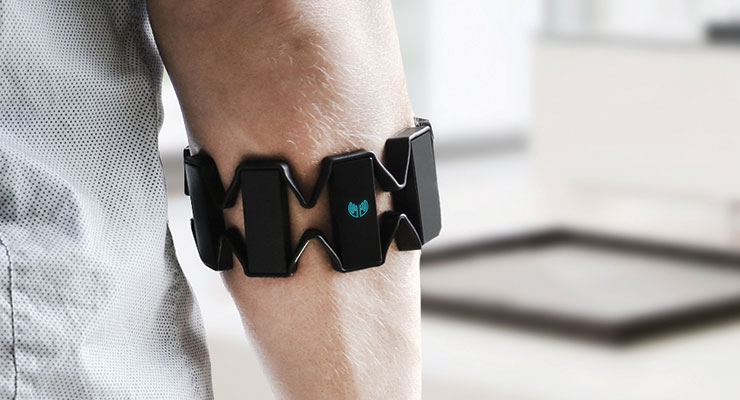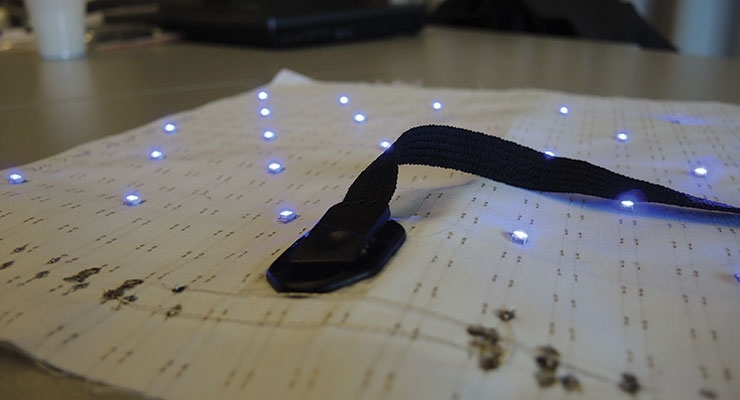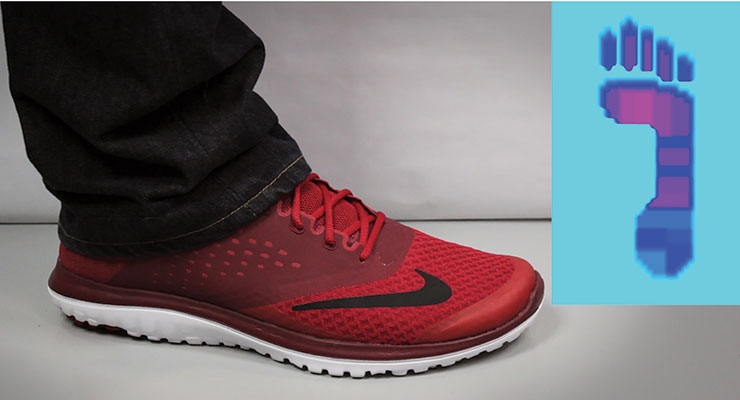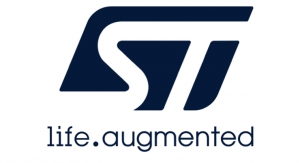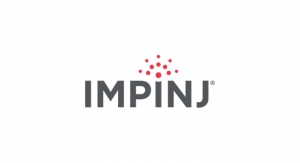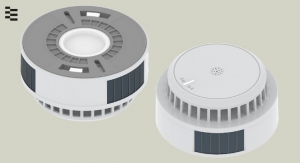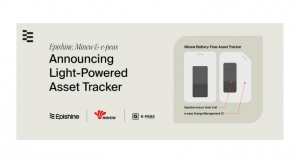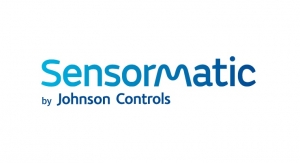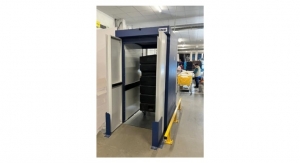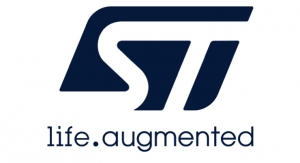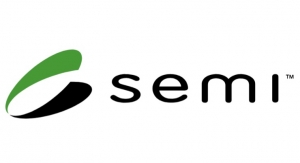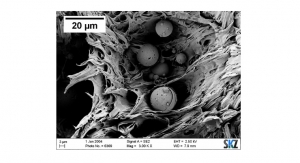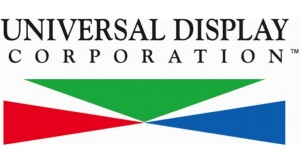David Savastano, Editor03.31.16
Wearables have quickly become a huge market. Consumers are monitoring their exercise and health more carefully now, and items like Fitbits have become part of daily life. As consumers look for wearables to do more, it requires even more sophisticated sensors.
Form factor is also a key for wearables. People expect flexible, comfortable gear, and wearable manufacturers are helping to meet this demand. As a result, flexible and printed electronics are playing a role in these products.
BeBop Sensors utilizes smart fabrics for sensor solutions for OEMs, and has more than a million sensors in daily use. Keith McMillen, CEO and founder of BeBop Sensors, said that it seems that most of the growth and changes have occurred in the last five years, starting with the explosion in consumer health and wellness/quantified self movement.
“Asynchronous or untethered devices like Nike+ early on and wrist-worn fitness trackers later have certainly led the charge, but as the smartphone titans have rolled out their own wearable devices or created partnerships with other companies, we’ve started to see a larger web of self-quantification as companies try to stake their claim on the various extremities of the human body (and animal, for that matter),” McMillen said.
McMillen noted that techniques for treatment of a huge selection of substrates, fabric and otherwise, progressively cheaper and smaller hardware components and quicker and cheaper printing techniques for near unlimited form factors will help drive advances.
“Printing will continue to be an integral part of our sensor technology any way you look at it,” McMillen added. “Sensors need to transmit signals that need to be processed and manipulated. As long as hardware is involved, printing will always be required. The size, scope, and methods will continue to evolve, but the need remains the same.”
Sensoria Inc. has developed a proprietary e-textile sensor platform for garments to provide health and fitness information, most notably socks. Mauricio Macagno, CTO and co-founder of Sensoria, said that the wearables market is evolving from pure electronic form factors, primarily wrist-based devices, to hardware/sensor infused apparel and gear.
“Testament is the evolution of companies and gadgets seen at CES in the last three editions,” Macagno noted. “We could count dozens of wrist devices last year and the year before, and now we see both a consolidation of those, some smart watches but above all the rise of a new generation of smart garments, like the Sensoria Running System, comprised of upper garments and socks with embedded sensor and hardware.”
With the Myo armband, its first product, Thalmic Labs is developing new ways of helping people interact with digital devices. Stephen Lake, CEO and co-founder of Thalmic Labs, said that Thalmic Labs has seen a sharp increase in the demand for wearables over the past few years.
“Market leaders are emerging and multinational retailers like Amazon and BestBuy are dedicating space to the wearable tech category,” said Lake. “Today, everyone wants to be able to seamlessly incorporate technology into their lives in order to make their day-to-day activities more efficient and simplified. With wearable tech, we think this interoperability is of even more importance since the whole idea behind it is to connect you directly with the technologies that you use on a daily basis.”
Founded by Christian Dalsgaard, its CTO, in 2004, Ohmatex is a pioneer in smart textile technology with more than 10 years experience. Ohmatex CEO Klaus Østergaard noted that there were very few players in the field at that time, but Dalsgaard saw the potential for developing this technology and the impact it could have for a range of applications – health, sport, emergency services and fashion.
“Today Ohmatex provides products and solutions for integrating electronics into textile,” Østergaard said. “We are working with the latest miniaturized Bluetooth Low Energy modules to create a platform with wireless charging and multiple sensor functions, for integration into consumer wearables. Our products for enabling wearable technology include thin conductive textile cabling and washable connectors that provide comfortable and practical ways of introducing electronics into garments and smart wearable devices.
“We currently have a contract with the European Space Agency (ESA) to develop a garment for monitoring muscle activity for astronauts during their training on the International Space Station, and have developed a medical device for measuring edema in patients with heart failure,” Østergaard added.
McMillen believes that the next logical spot for wearables is from the body to the places we spend much of our time. He pointed to automotive safety and comfort, consumer health and lifestyle, athletic apparel and training, smart home/smart factory, musical/entertainment control and input, medical care and rehabilitation, robotics and prosthetics as excellent opportunities.
“We certainly see the expansion going beyond the human body to enter the spaces that humans spend a majority of their time (i.e. office, car, home) in a way that expands the ability to monitor person-to-environment interactions without the need to keep all these devices with or on one’s person,” added McMillen. “In addition to overcoming the newfound ‘burden of portability,’ these areas allow for deeper development of the user interface and feature functionality due to overcoming constraints of human form-factor and constraints on power and communications bandwidth.
“With the progression of artificial intelligence, the increase in feature scope is going beyond mere quantification, but becoming mechanisms for actively adjusting an environment for benefits to users in convenience, health and safety,” McMillen noted. “Ultimately, these are resulting in step-change improvements to quality of life, life extension and life preservation.”
McMillen, Macagno and Østergaard all say that it is important that wearables not be obtrusive by remaining comfortable for the user.
“BeBop fabric sensors are smart, flexible, wearable, washable, and usually invisible,” said McMillen. “BeBop excels in human form-factor specific use cases. Quantification on the size and scale of the human body and the large things that we interact with (cars, seats, beds, etc.) with minimal to no impact to user experience (touch and feel, product lifetime, OEM ease of integration) makes BeBop a unique supplier of solutions for all things involving human-to-object interaction.”
“Our mission is to have wearables disappear, because they are already part of what they wear,” Macagno said. “In order to do that, you need to create sensors that can be embedded in garments, can be washed, are soft and comfortable.
By creating a wearable IOT platform, Sensoria, together with its partners, brings to market products that transparently collect biometric data and data analysis that can serve both the consumer (help them achieve their activity specific goals) as well as the partner,” Macagno added.
“There are many who can develop the sensors and apps behind smart textile garments, but they lack the knowledge to successfully incorporate these into a garment and connect the sensors to electronics in a way which is comfortable for users and which can be easily mass produced,” Østergaard noted. “This is where Ohmatex offers expertise on connecting and concealing sensors and micro electronics within garments and in developing components, which make it easier for other developers to create their own garments.”
Macagno sees plenty of opportunities for wearables to expand into other aspects of monitoring health in daily life.
“There is really unlimited potential for this technology,” Macagno said. “We received interest from an incredible number of different verticals and industries. We see sports and lifestyle an obvious palatable market for a plethora of solutions, where we can embed our technology in multiple garments and/or gear for different scenarios.
“We also see a great potential in healthcare, in particular in scenarios where continuous monitoring can help the circle of care for better diagnosis, recovery or even prevention. From fall prevention to gait analysis for Parkinson, from diabetes ulcer recovery to Alzheimer patient monitoring, there are huge opportunities to do well and do good,” Macagno added.
Outlook for Wearables
With the growth in the use of wearables, it is understandable that manufacturers have large expectations.
“I am bullish on wearables, as long as they serve a purpose beside collecting data and showing nice graphs, whether the purpose is to improve your running technique or help recover from a stroke,” Macagno said.
Østergaard said that Ohmatex is working with the latest in textile sensor technology and mircoelectronics to develop solutions that will help to accelerate the pace at which this industry develops.
“As textile sensors and microelectronics become smaller and more sophisticated, Ohmatex is working on the ongoing challenges of connecting these new technologies within garments and finding ways of introducing these technologies into the traditional clothing manufacturing processes for mass production,” Østergaard added.
“We’re creating technologies that push forward the field of human-computer interaction, and technology at large,” said Lake. “We want to enhance, complement and augment the way that we, as humans, experience the world. Something you wear, rather than something that confines you to your desk, is a crucial component of that. We believe that we’re going to change the way people interact with technology through wearable tech.”
“‘Wearables’ as a consumer market has disappointed in the view of most in the industry,” said McMillen. “There are only so many devices a person can/will wear with a somewhat limited pool of useful use cases.
“Having said that, as the ‘Wearables’ market starts to dissolve into some of the above mentioned markets, we will likely see a another wave of wearable devices that begin to find their way into the mainstream through more developed and specific use cases as the platforms beneath them mature,” McMillen added. “The car, the home/office/factory, AR/VR devices, drones - these are all on the cusp of entering a new phase of their technological progression and wearable devices will follow suit.
“BeBop is uniquely positioned to take advantage of both flat and steep phases of the various technology development curves - the technology is flexible, scalable and economical enough to be integrated into existing use cases to merely enhance functionality, and the ones that are only in the nascent phases of finding product-market fit,” he added. “Having a company and technology that is inherently nimble both widens the windows of opportunity and expands the number of windows open to us.”
With all of the interest in wearables, there have been plenty of commercial successes, leading to some saying that it is a “significant” presence. However, there are also concerns over whether consumers see the benefits of all of these products that are flooding into the market.
“Repeated usage and customer loyalty can definitely be a challenge,” Macagno said. “If a wearable device does not help answer the question ‘what’s in it for me? what next?,’ it can soon go in the drawer.”
“Significant is a relative term, and with regard to what was expected of it, it seems that we’ve reached a saturation point where the use cases have been mostly exhausted by the various small and large companies sprinting into this space,” McMillen concluded. “It seems like there will be a momentary leveling off while wearable manufacturers wait for some of the central devices and platforms to mature a little more. This will open up use cases that the mainstream market hasn’t even begun to imagine yet.”
Form factor is also a key for wearables. People expect flexible, comfortable gear, and wearable manufacturers are helping to meet this demand. As a result, flexible and printed electronics are playing a role in these products.
BeBop Sensors utilizes smart fabrics for sensor solutions for OEMs, and has more than a million sensors in daily use. Keith McMillen, CEO and founder of BeBop Sensors, said that it seems that most of the growth and changes have occurred in the last five years, starting with the explosion in consumer health and wellness/quantified self movement.
“Asynchronous or untethered devices like Nike+ early on and wrist-worn fitness trackers later have certainly led the charge, but as the smartphone titans have rolled out their own wearable devices or created partnerships with other companies, we’ve started to see a larger web of self-quantification as companies try to stake their claim on the various extremities of the human body (and animal, for that matter),” McMillen said.
McMillen noted that techniques for treatment of a huge selection of substrates, fabric and otherwise, progressively cheaper and smaller hardware components and quicker and cheaper printing techniques for near unlimited form factors will help drive advances.
“Printing will continue to be an integral part of our sensor technology any way you look at it,” McMillen added. “Sensors need to transmit signals that need to be processed and manipulated. As long as hardware is involved, printing will always be required. The size, scope, and methods will continue to evolve, but the need remains the same.”
Sensoria Inc. has developed a proprietary e-textile sensor platform for garments to provide health and fitness information, most notably socks. Mauricio Macagno, CTO and co-founder of Sensoria, said that the wearables market is evolving from pure electronic form factors, primarily wrist-based devices, to hardware/sensor infused apparel and gear.
“Testament is the evolution of companies and gadgets seen at CES in the last three editions,” Macagno noted. “We could count dozens of wrist devices last year and the year before, and now we see both a consolidation of those, some smart watches but above all the rise of a new generation of smart garments, like the Sensoria Running System, comprised of upper garments and socks with embedded sensor and hardware.”
With the Myo armband, its first product, Thalmic Labs is developing new ways of helping people interact with digital devices. Stephen Lake, CEO and co-founder of Thalmic Labs, said that Thalmic Labs has seen a sharp increase in the demand for wearables over the past few years.
“Market leaders are emerging and multinational retailers like Amazon and BestBuy are dedicating space to the wearable tech category,” said Lake. “Today, everyone wants to be able to seamlessly incorporate technology into their lives in order to make their day-to-day activities more efficient and simplified. With wearable tech, we think this interoperability is of even more importance since the whole idea behind it is to connect you directly with the technologies that you use on a daily basis.”
Founded by Christian Dalsgaard, its CTO, in 2004, Ohmatex is a pioneer in smart textile technology with more than 10 years experience. Ohmatex CEO Klaus Østergaard noted that there were very few players in the field at that time, but Dalsgaard saw the potential for developing this technology and the impact it could have for a range of applications – health, sport, emergency services and fashion.
“Today Ohmatex provides products and solutions for integrating electronics into textile,” Østergaard said. “We are working with the latest miniaturized Bluetooth Low Energy modules to create a platform with wireless charging and multiple sensor functions, for integration into consumer wearables. Our products for enabling wearable technology include thin conductive textile cabling and washable connectors that provide comfortable and practical ways of introducing electronics into garments and smart wearable devices.
“We currently have a contract with the European Space Agency (ESA) to develop a garment for monitoring muscle activity for astronauts during their training on the International Space Station, and have developed a medical device for measuring edema in patients with heart failure,” Østergaard added.
McMillen believes that the next logical spot for wearables is from the body to the places we spend much of our time. He pointed to automotive safety and comfort, consumer health and lifestyle, athletic apparel and training, smart home/smart factory, musical/entertainment control and input, medical care and rehabilitation, robotics and prosthetics as excellent opportunities.
“We certainly see the expansion going beyond the human body to enter the spaces that humans spend a majority of their time (i.e. office, car, home) in a way that expands the ability to monitor person-to-environment interactions without the need to keep all these devices with or on one’s person,” added McMillen. “In addition to overcoming the newfound ‘burden of portability,’ these areas allow for deeper development of the user interface and feature functionality due to overcoming constraints of human form-factor and constraints on power and communications bandwidth.
“With the progression of artificial intelligence, the increase in feature scope is going beyond mere quantification, but becoming mechanisms for actively adjusting an environment for benefits to users in convenience, health and safety,” McMillen noted. “Ultimately, these are resulting in step-change improvements to quality of life, life extension and life preservation.”
McMillen, Macagno and Østergaard all say that it is important that wearables not be obtrusive by remaining comfortable for the user.
“BeBop fabric sensors are smart, flexible, wearable, washable, and usually invisible,” said McMillen. “BeBop excels in human form-factor specific use cases. Quantification on the size and scale of the human body and the large things that we interact with (cars, seats, beds, etc.) with minimal to no impact to user experience (touch and feel, product lifetime, OEM ease of integration) makes BeBop a unique supplier of solutions for all things involving human-to-object interaction.”
“Our mission is to have wearables disappear, because they are already part of what they wear,” Macagno said. “In order to do that, you need to create sensors that can be embedded in garments, can be washed, are soft and comfortable.
By creating a wearable IOT platform, Sensoria, together with its partners, brings to market products that transparently collect biometric data and data analysis that can serve both the consumer (help them achieve their activity specific goals) as well as the partner,” Macagno added.
“There are many who can develop the sensors and apps behind smart textile garments, but they lack the knowledge to successfully incorporate these into a garment and connect the sensors to electronics in a way which is comfortable for users and which can be easily mass produced,” Østergaard noted. “This is where Ohmatex offers expertise on connecting and concealing sensors and micro electronics within garments and in developing components, which make it easier for other developers to create their own garments.”
Macagno sees plenty of opportunities for wearables to expand into other aspects of monitoring health in daily life.
“There is really unlimited potential for this technology,” Macagno said. “We received interest from an incredible number of different verticals and industries. We see sports and lifestyle an obvious palatable market for a plethora of solutions, where we can embed our technology in multiple garments and/or gear for different scenarios.
“We also see a great potential in healthcare, in particular in scenarios where continuous monitoring can help the circle of care for better diagnosis, recovery or even prevention. From fall prevention to gait analysis for Parkinson, from diabetes ulcer recovery to Alzheimer patient monitoring, there are huge opportunities to do well and do good,” Macagno added.
Outlook for Wearables
With the growth in the use of wearables, it is understandable that manufacturers have large expectations.
“I am bullish on wearables, as long as they serve a purpose beside collecting data and showing nice graphs, whether the purpose is to improve your running technique or help recover from a stroke,” Macagno said.
Østergaard said that Ohmatex is working with the latest in textile sensor technology and mircoelectronics to develop solutions that will help to accelerate the pace at which this industry develops.
“As textile sensors and microelectronics become smaller and more sophisticated, Ohmatex is working on the ongoing challenges of connecting these new technologies within garments and finding ways of introducing these technologies into the traditional clothing manufacturing processes for mass production,” Østergaard added.
“We’re creating technologies that push forward the field of human-computer interaction, and technology at large,” said Lake. “We want to enhance, complement and augment the way that we, as humans, experience the world. Something you wear, rather than something that confines you to your desk, is a crucial component of that. We believe that we’re going to change the way people interact with technology through wearable tech.”
“‘Wearables’ as a consumer market has disappointed in the view of most in the industry,” said McMillen. “There are only so many devices a person can/will wear with a somewhat limited pool of useful use cases.
“Having said that, as the ‘Wearables’ market starts to dissolve into some of the above mentioned markets, we will likely see a another wave of wearable devices that begin to find their way into the mainstream through more developed and specific use cases as the platforms beneath them mature,” McMillen added. “The car, the home/office/factory, AR/VR devices, drones - these are all on the cusp of entering a new phase of their technological progression and wearable devices will follow suit.
“BeBop is uniquely positioned to take advantage of both flat and steep phases of the various technology development curves - the technology is flexible, scalable and economical enough to be integrated into existing use cases to merely enhance functionality, and the ones that are only in the nascent phases of finding product-market fit,” he added. “Having a company and technology that is inherently nimble both widens the windows of opportunity and expands the number of windows open to us.”
With all of the interest in wearables, there have been plenty of commercial successes, leading to some saying that it is a “significant” presence. However, there are also concerns over whether consumers see the benefits of all of these products that are flooding into the market.
“Repeated usage and customer loyalty can definitely be a challenge,” Macagno said. “If a wearable device does not help answer the question ‘what’s in it for me? what next?,’ it can soon go in the drawer.”
“Significant is a relative term, and with regard to what was expected of it, it seems that we’ve reached a saturation point where the use cases have been mostly exhausted by the various small and large companies sprinting into this space,” McMillen concluded. “It seems like there will be a momentary leveling off while wearable manufacturers wait for some of the central devices and platforms to mature a little more. This will open up use cases that the mainstream market hasn’t even begun to imagine yet.”

